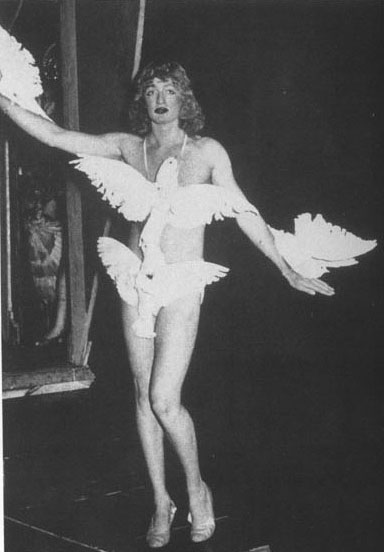Trans America, Part 3: Hasty Pudding & Mountain Charley
A History of Transgenderism In America Pre-1877
Part 3: Mountain Charley & Hasty Pudding
by Lauren Rene Hotchkiss
The period of the Civil War for some reason fostered more historical mentions of transgenderism than any period before it. The first of these was Elsa Jane Guerin, The illegitimate daughter of Anna Baldwin and plantation owner Henry Vereau.
Elsa was born near Baton Rouge, about 1837. She was raised by her step-father but educated at boarding school in New Orleans before she married a river pilot at the age of 12. Three years later her husband was killed in a fight with a ship’s mate and to support her children, Elsa became a sailor. She worked for a while on steam ships travelling between St. Louis and New Orleans, and was later engaged as a brakeman on the Illinois Central Railroad — a job she would have to leave after more than eight months when her boss began to suspect her true sex. She later became a gold prospector.
According to a man who claimed to have known her, She also served in the Iowa Cavalry during the civil War under the name Charles “Mountain Charley” Hatfield — a role in which she was to live undetected for 13 years. Serving for a time as a spy, she rose to Lieutenant before retiring from the Army.
Her story was first published in Iowa in 1861. In it, in comparing male and female clothes, Elsa observes: “The change from the cumbersome, unhealthy attire of women to the more convenient, healthful habiliments of men, was in itself almost sufficient to compensate for its unwomanly character.”
Though basically content in her role as Mountain Charley, she also harbored an aching desire for female companionship at times. On one occasion, while on a journey to California in the spring of 1855 she yearned to comfort a mother with two children who had just discovered her husband’s dead body along a mountain trail. But dressed as a man, Mountain Charley felt he could offer little in terms of emotional support. “I longed to disclose to her my true sex and minister to her in that manner in which only one woman can to another,” she wrote, “Yet I dared not do so and merely gave her but that rough consolation which befitted my assumed character. As the mother of a young son and daughter, Charley’s frustrated desire to help the young widow no doubt added to her own sense of loneliness.
Shortly afterward, while sitting in a St. Louis saloon before her departure to the West, Charley began to miss her children’s company and felt her masquerade forced her “to wander an outcast from the companionship and sympathy of my own sex.” Although she gained financial and social advantages from her masculine persona, she felt that the relationships that she had enjoyed as a woman were set apart from her male identity. Her diary entry for July 16, 1856 is revealing on this point. In it she writes, “The pleasures of the disparate spheres of men and women are completely incompatible and foster the growth of a divided self.”
Moving from rural frontier to urban academia, The Hasty Pudding Theatricals at Harvard College developed as an offshoot of a secret society founded in 1795. Members of the Hasty Pudding Club met in dormitory rooms to stage skits on serio-comic topics. As they developed, what began primarily as orations turned into mock trials and gradually became more and more theatrical.
The first full-fledged Pudding play, in 1844 was called Bombastes Furioso and featured a crossdressed heroine named Distaffina. Both Distaffina and her audience were, of course, male Harvard students. Over the years, Pudding Shows featured such luminaries as Oliver Wendell Holmes (1860) Henry Cabot Lodge (1871) and Theodore Roosevelt (1877) in the roles of what one club chronicler referred to as “Harvard’s hairy-chested heroines.” The Hasty Pudding Society was a very strong influence on the later development of Boston’s Tavern Club and of San Francisco’s Bohemian Club.
Category: Transgender History




